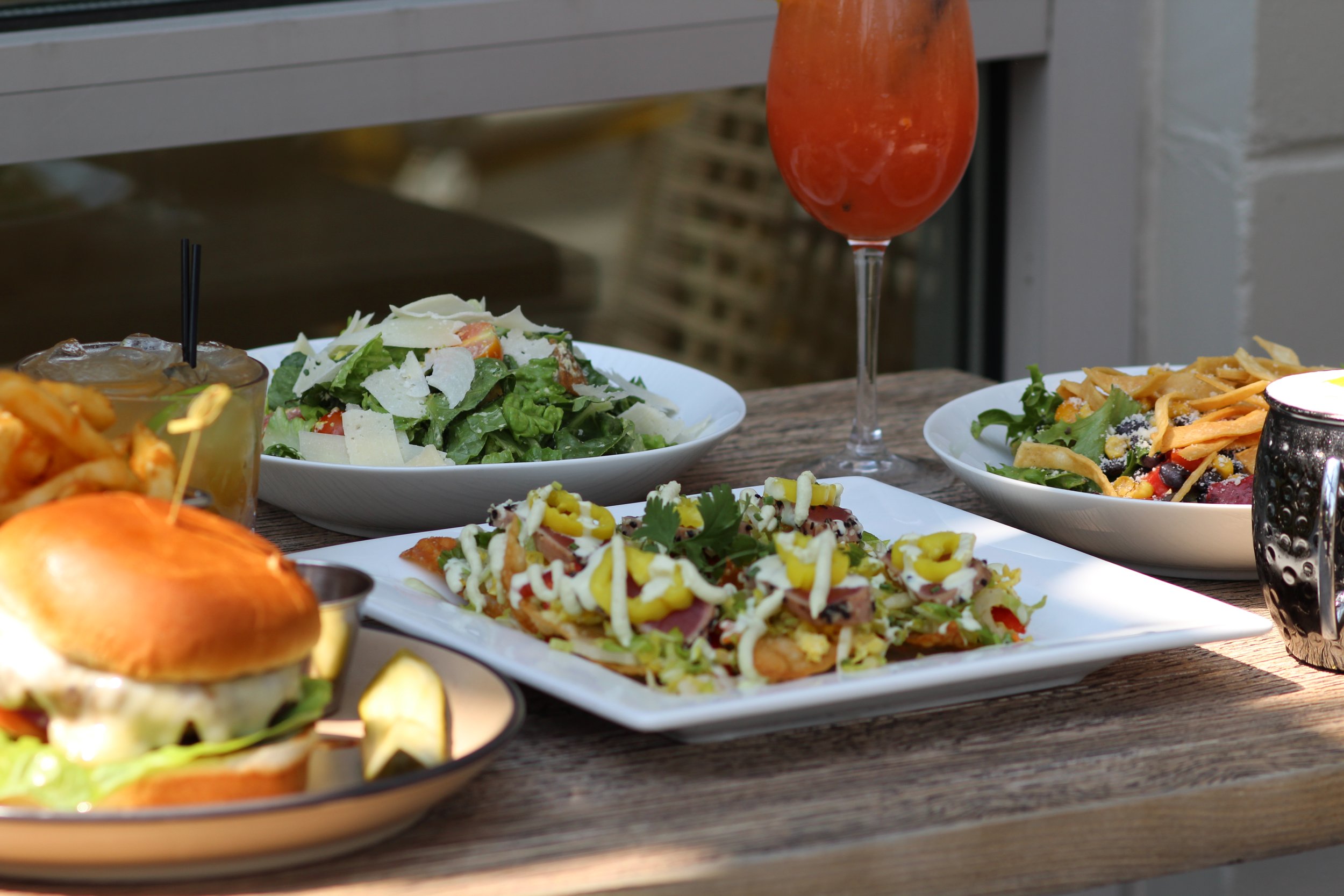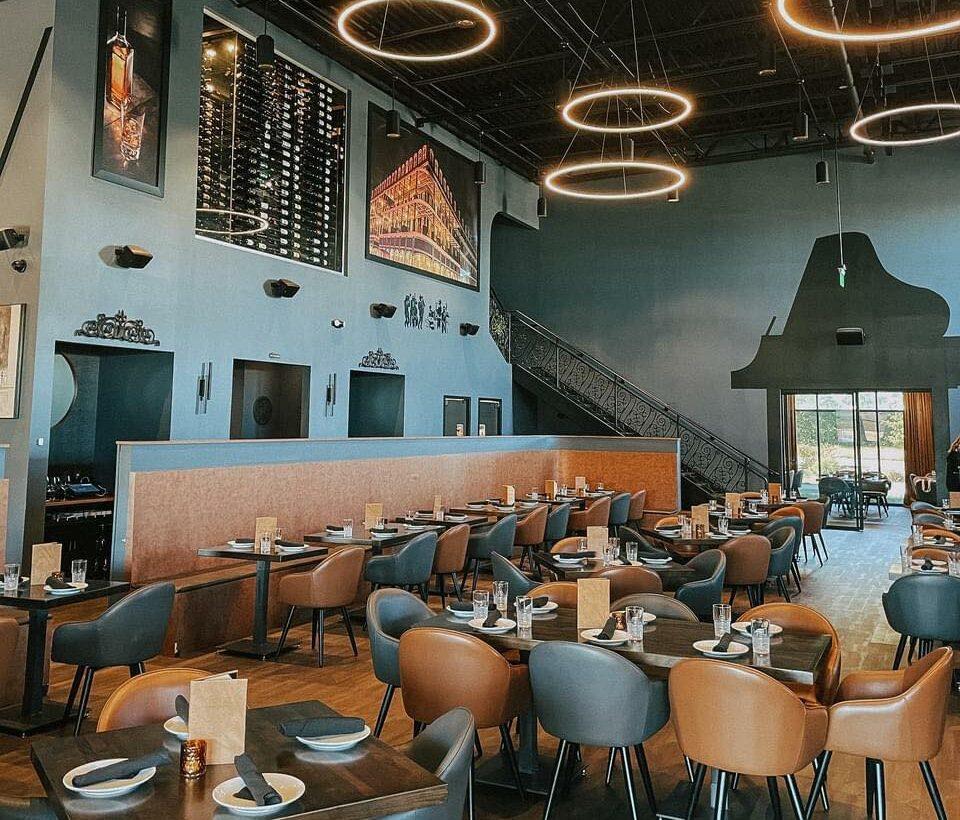Savor Authentic Oriental Food With a Pan-Asian Twist for a Culinary Adventure
Starting a cooking trip through authentic Asian cuisine, improved with a Pan-Asian spin, supplies an one-of-a-kind chance to discover the abundant tapestry of tastes that specify the area's diverse culinary traditions. This experience welcomes you to savor the beautiful equilibrium of preferences-- wonderful, salty, spicy, and sour-- harmonized by fragrant herbs and spices. Picture the innovative combination of Thai curry and ramen or the unexpected delight of sushi burritos. As you consider these attracting dishes, take into consideration the social stories and historical impacts that shape them, each bite providing a tale waiting to be uncovered.

Discovering Pan-Asian Tastes
In the realm of international gastronomy, Pan-Asian cuisine attracts attention for its remarkable variety and the unified interaction of flavors from different Oriental societies. This cooking approach commemorates the unique components and abundant practices discovered across the continent, producing a tapestry of tastes that is both satisfying and fascinating. Secret to Pan-Asian food is its capacity to balance different tastes-- sweet, salted, spicy, and sour-- while highlighting the quality and high quality of each ingredient.
From the umami-rich soy sauce of Japan to the fiery chili peppers of Thailand, Pan-Asian cuisine provides a substantial palette of flavors. These aspects are usually incorporated in creative methods, boosting meals with layers of intricacy. As an example, using great smelling natural herbs such as lemongrass and cilantro, typical in Vietnamese and Thai food, includes a rejuvenating brightness to meals, while the consolidation of coconut milk supplies a velvety, abundant structure.
The focus on fresh produce and aromatic seasonings makes certain that each meal is not just a banquet for the palate but also for the senses. Pan-Asian food invites restaurants to embark on a culinary trip, exploring the vast and differed landscapes of Asian gastronomy with every bite.
Fusion Recipes to Try
While Pan-Asian food is commemorated for its traditional tastes, the modern-day cooking landscape is increasingly accepting combination recipes that mix these classic components with impacts from other areas. This cutting-edge strategy not just honors the abundant heritage of Oriental cooking arts however also introduces novel preference experiences that attract modern tastes.
An archetype of such a fusion recipe is the Korean-Mexican taco, where marinated bulgogi beef is wrapped in a warm tortilla, covered with kimchi and a spicy gochujang-infused salsa. This mix marries the vibrant, mouthwatering flavors of Korea with the vivid, fresh aspects of Mexican cuisine. Similarly, sushi burritos have actually obtained appeal, joining together the fragile virtuosity of Japanese sushi with the hearty, hand-held comfort of a burrito, typically featuring combination components like tempura shrimp and avocado with a drizzle of wasabi mayo.
One more noteworthy recipe is Thai curry ramen, which instills the creamy, fragrant flavors of Thai curry into the reassuring broth of typical Japanese ramen, creating an unified mix that entices the senses. These blend meals extend past mere uniqueness; they represent a cooking discussion between societies, motivating expedition and technology worldwide of Pan-Asian cuisine.
Crucial Active Ingredients and Flavors
To genuinely value Pan-Asian cuisine, one need to recognize the vital ingredients and flavors that create its foundation. This varied cooking style draws from an abundant tapestry of Eastern customs, utilizing an unified mix of tastes and appearances.
Aromatic aspects are critical, with garlic, lemongrass, and ginger being common throughout various Pan-Asian dishes. These active ingredients provide an aromatic base that improves the intricacy of tastes. Seasonings such as star anise, cardamom, and cinnamon present warmth and personality, resembling influences from areas like China and India.

Cooking Methods and Tips
Grasping the art of Pan-Asian cuisine calls for knowledge with its distinctive cooking strategies, each adding to the vibrant tapestry of flavors this culinary custom is commemorated for. Central to these approaches is the stir-fry, a quick food preparation strategy that maintains the nutritional stability and vivid colors of components. Using a frying pan, the stir-fry approach enables for also warm circulation, important for attaining the particular appearance and taste balance of Pan-Asian recipes.
One more fundamental method is steaming, particularly common in Chinese cuisine. This gentle method maintains the all-natural tastes and nutrients of components, making it excellent for seafood and vegetables. Dumplings, a beloved staple, commonly gain from steaming, leading to soft, succulent structures.
Barbecuing, also important, gives great smoky depths to meals such as Oriental bulgogi or Japanese yakitori (Best ambiance restaurants Islamabad). This strategy usually includes marinating active ingredients, allowing tastes to penetrate deeply prior to cooking over an open fire or hot plate
Finally, understanding the art of balancing flavors-- sweet, sour, salty, bitter, and umami-- is important. Correctly layering these components can raise a recipe from ordinary to amazing, providing a complicated and satisfying cooking experience that symbolizes the essence of Pan-Asian cuisine.
Eating Experiences Worldwide
Across the world, Pan-Asian cuisine offers an unparalleled eating experience, celebrated for its rich tapestry of flavors and vibrant presentations. This cooking sensation has actually transcended social borders, capturing the hearts and tastes buds of food fanatics worldwide. In cosmopolitan cities like New York, London, and Sydney, Pan-Asian dining establishments act as melting pots where culinary customs from Thailand, Japan, China, and past converge, offering restaurants with an eclectic mix of dishes here are the findings that highlight the area's variety.
The international allure of Pan-Asian food exists in its capacity to supply both credibility and advancement. Chefs skillfully wed standard components such as lemongrass, soy sauce, and miso with contemporary techniques, resulting in recipes that are both refreshingly new and acquainted. This blend permits restaurants to start a culinary journey that respects heritage while accepting modernity.
Additionally, dining experiences are boosted through thoughtfully developed settings that mirror the values of Pan-Asian appearances. From minimalist Japanese-inspired insides to dynamic Thai-themed spaces, each dining establishment offers a special atmosphere that enhances the cooking offerings. As an outcome, patrons are not simply taking in a meal but partaking in a social experience, making Pan-Asian eating a truly international sensation.
Final Thought
The exploration of Pan-Asian food provides an extensive understanding of the intricate interplay of flavors and culinary traditions across Asia. By embracing fusion dishes such as Thai curry ramen and sushi burritos, the culinary trip not only highlights the flexibility of traditional components however additionally showcases cutting-edge modern techniques. This gastronomic experience, improved by cooking approaches and essential seasonings, provides a special possibility to appreciate the multiculturalism and culinary virtuosity that define Pan-Asian cuisine on a worldwide scale.
Getting started on a culinary journey with genuine Asian food, improved with a Pan-Asian spin, provides a special possibility to discover the rich tapestry of tastes that define the region's varied cooking customs.In the world of worldwide gastronomy, Pan-Asian food stands out for its exceptional variety check this and the harmonious interaction of flavors from numerous Asian cultures. Trick to Pan-Asian food is its ability to stabilize contrasting tastes-- sweet, salted, spicy, and sour-- while highlighting the quality and top quality of each component.
